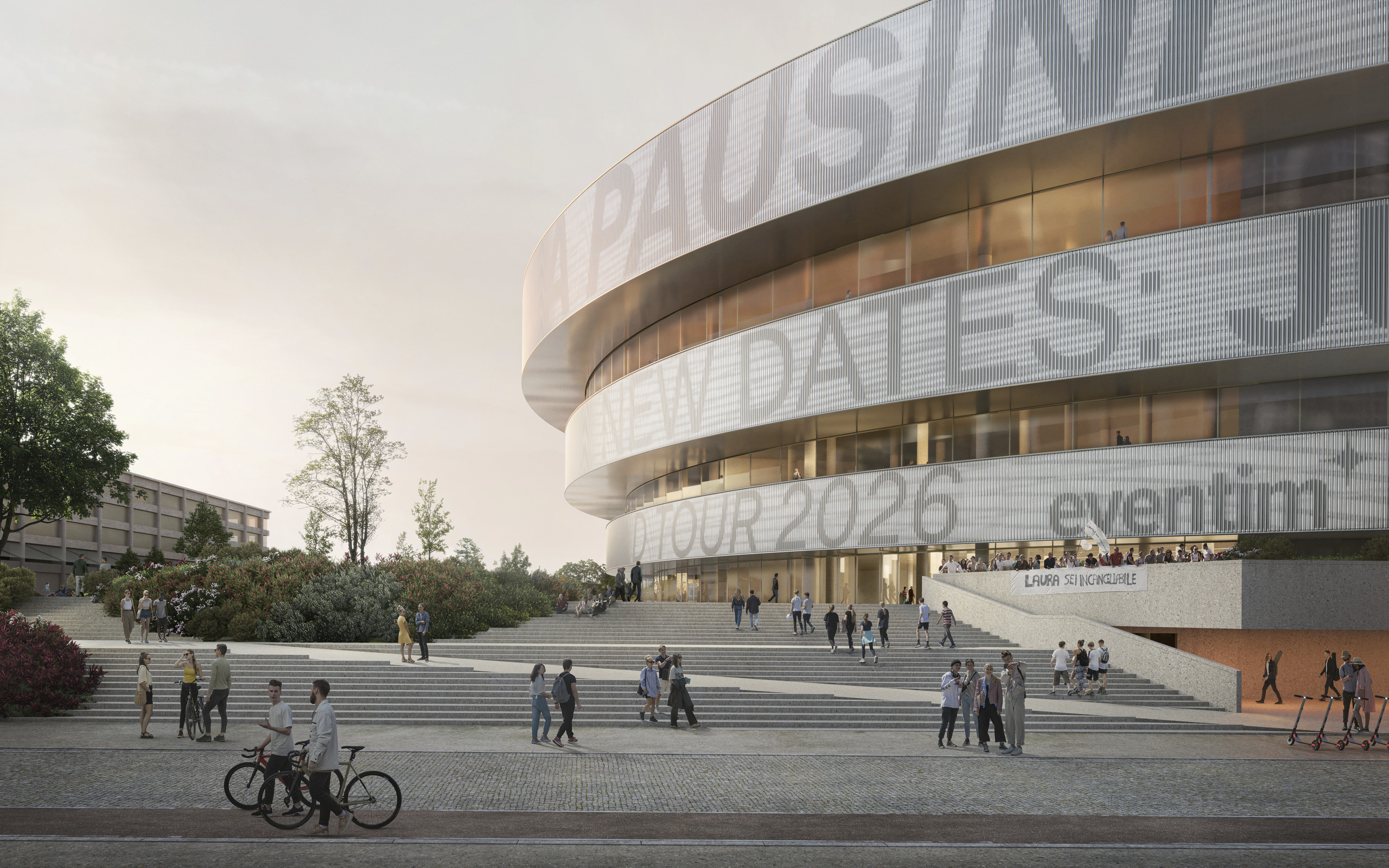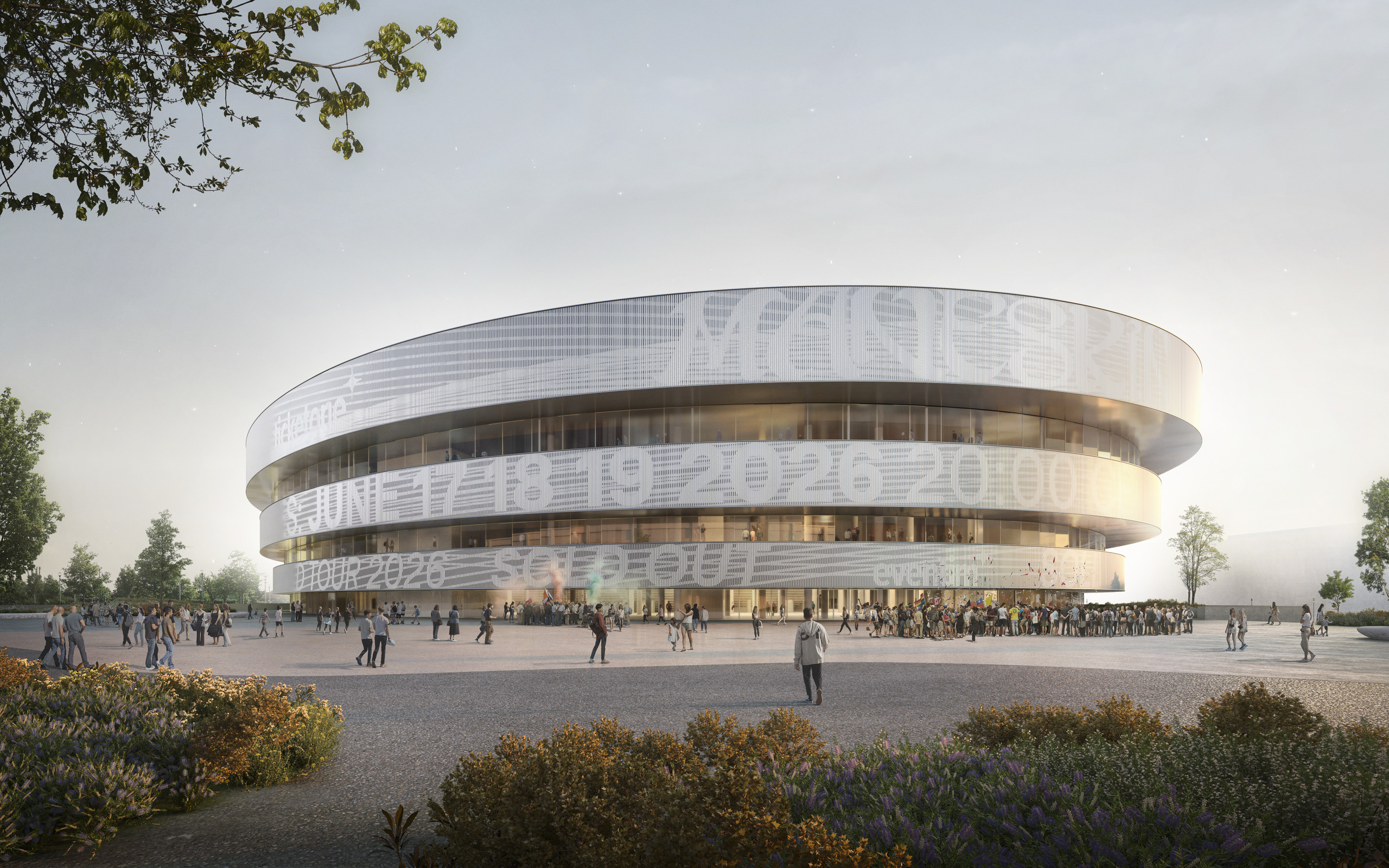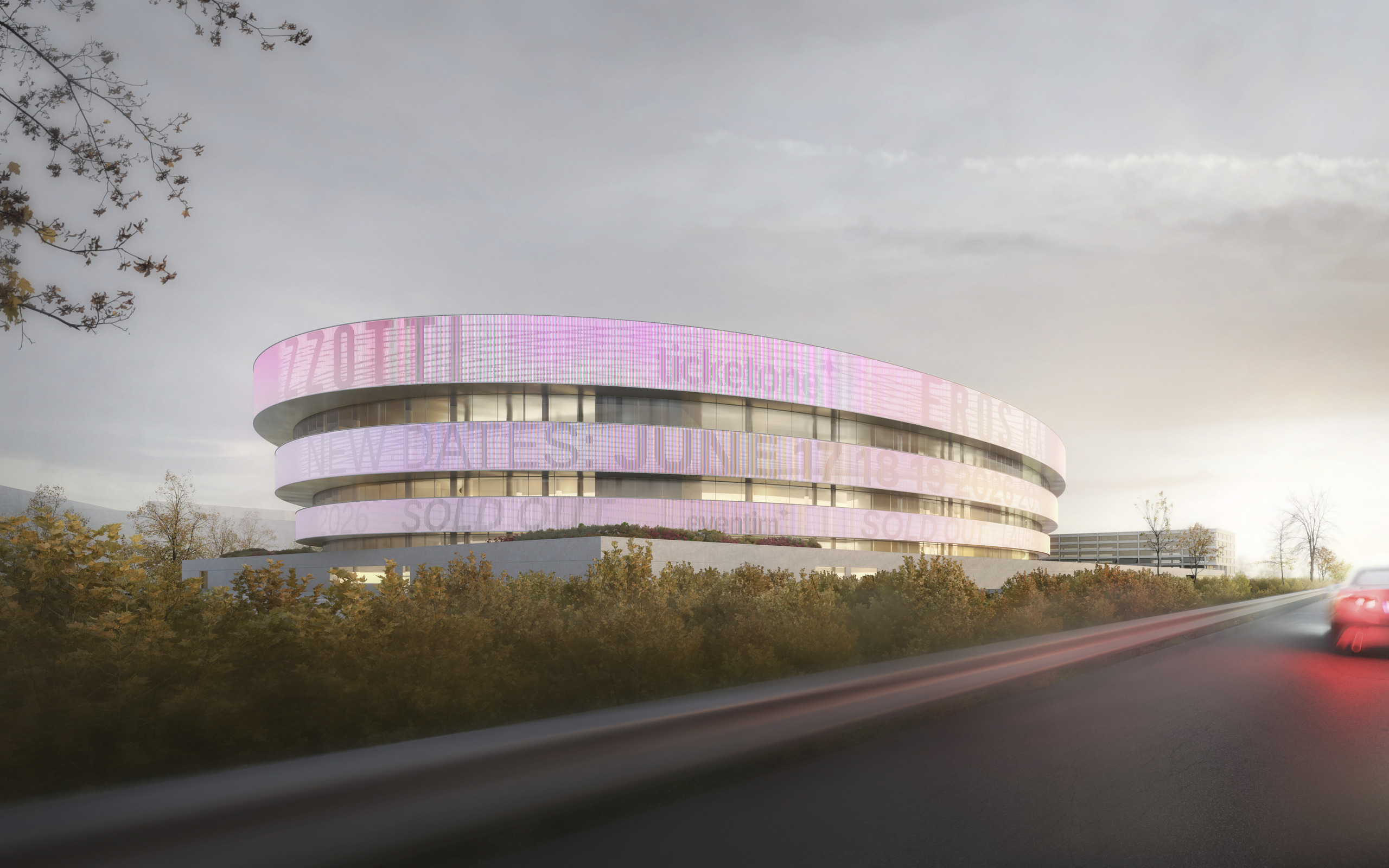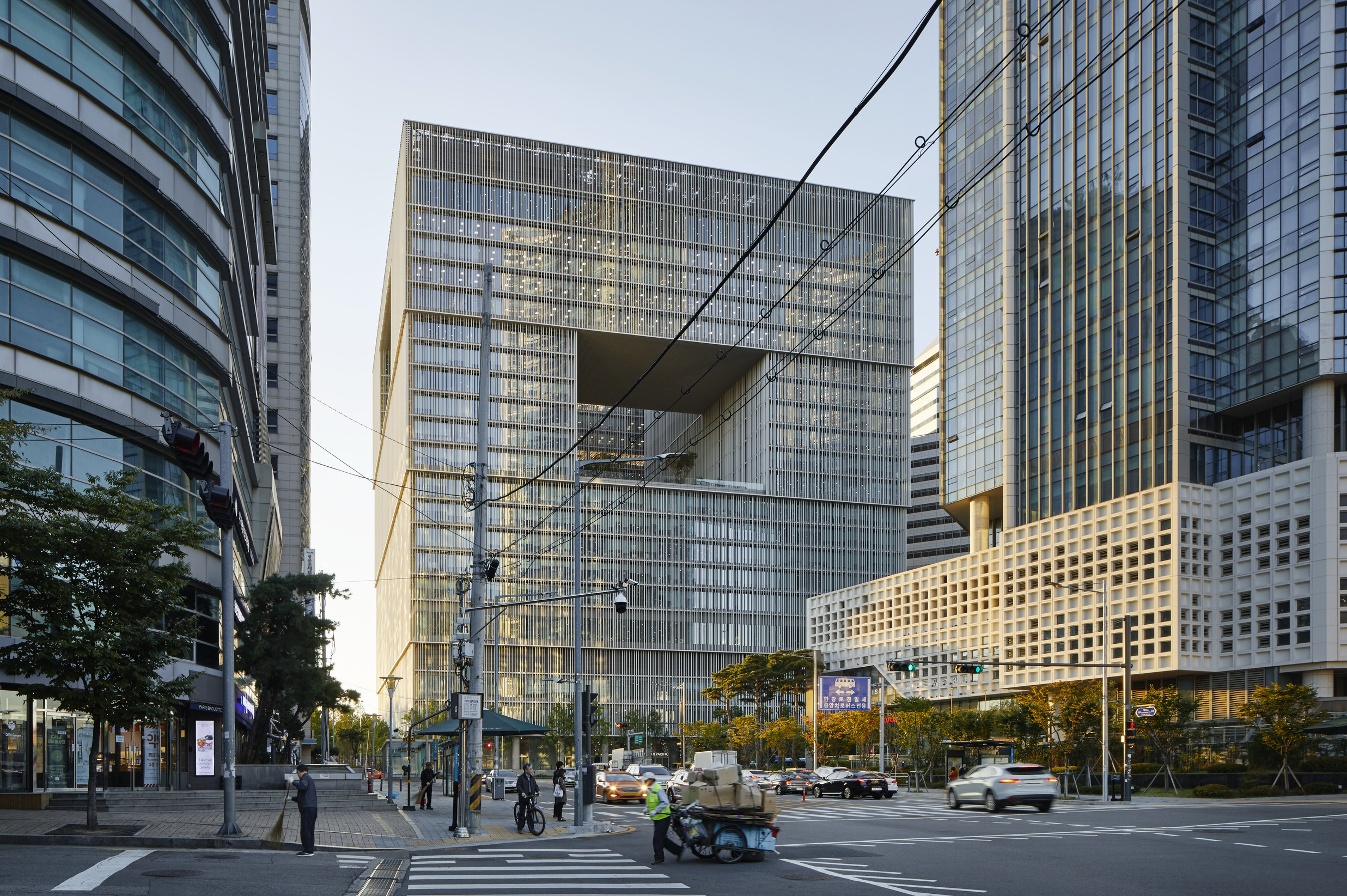Arena in Santa Giulia
Milan, Italy
2021–
Milano Santa Giulia, a new urban district, is under redevelopment in the south-east of Milan, only a few kilometres from the city centre and connected to the high-speed train network and motorway. The centrepiece of the neighbourhood is a new arena, catering for sports and cultural events with up to 16,000 visitors. Echoing the elliptical form of the city’s former Roman amphitheatre, the arena gives a contemporary expression to a historical archetype and creates a place for collective entertainment. It will host large concerts, sports events and festivals and will serve as a venue for the Winter Olympic
Games in early 2026. Outside of event hours, the spacious outdoor areas will provide a new opportunity for social interactions for people from the neighbourhood as well as from the whole city.
The arena, a collaboration between Arup and David Chipperfield Architects, is placed in the south of the site. Slightly rotated, it welcomes arriving guests from the west and draws visitors up a wide flight of steps onto a raised podium, occupying almost the entire site. Here a spacious piazza of over 10,000 square metres can be used as a venue for outdoor events.
On top of this monolithic podium, three rings of increasing heights appear to float one above the other, wrapping around the entire building and lending it its dynamic form. Their metallic materiality is characterised by shimmering aluminium tubes during the day and LED strips of the large-scale media integration that light up at night. The hard materiality of the podium and the arena is counterbalanced by organic green spaces with trees that extend down the staircase like a green hilly landscape.
Inside the arena, there are two tiers above the parterre level as well as an upper level with lounges and sky boxes. All seats are accessible via spacious lobbies at all levels, as are catering and service facilities. The necessary car parking spaces are located within the podium as well as in a multi-storey car park, situated in the north of the site. In addition to measures to minimise the consumption of resources and CO2 emissions, the sustainability concept includes photovoltaic systems on the roof, largely covering the needs of the energy efficient building on site.
Data and credits
- Competition
- 2021
- Project start
- 2021
- Construction start
- 2023
- Completion (due)
- 2025
- Capacity
- 16,000 (12,000 seats, 4,000 standing)
- Client
- CTS Eventim Group
- Architect
- Arup with David Chipperfield Architects
- Partners
- David Chipperfield, Harald Müller, Alexander Schwarz
- Project architect
- Guido Porta (Concept study), Leander Bulst (Preparation and brief to Developed design, Design intent details, Site design supervision)
- Project team
- Guido Porta, Luigi Serra, Michael Ahlers, Moritz Grabmayr, Simpert Hafenmaier, Frank Jödicke, Theresa Rauch
- Competition team
- Annette Flohrschuetz, Julijana Steimle, Lucas Fricke; Visualisation: Dalia Liksaite
- Quantity surveyor
- Global Assistance Development, Milan
- Project coordination
- Consorzio Stabile Eteria, Rome
- Engineering and consulting
- Arup, Milan
- Fire consultant
- Arup; Studio Mistretta & Co., Milan
- Acoustic consultant
- Arup; Studio MRG, Turin
- Civil Works consultant
- Studio AGN, Locate di Triulzi
- Landscape consultant
- Studio Laura Gatti, Milan
- Visualisations
- Onirism Studio






